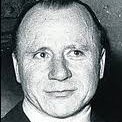
b: 1918
Max Gufler
Summary
Name:
Max GuflerNickname:
Bluebeard of St. PöltenYears Active:
1946 - 1958Birth:
May 01, 1918Status:
DeceasedClass:
Serial KillerVictims:
4Method:
Drowning / BludgeoningNationality:
Austria
b: 1918
Max Gufler
Summary: Serial Killer
Name:
Max GuflerNickname:
Bluebeard of St. PöltenStatus:
DeceasedVictims:
4Method:
Drowning / BludgeoningNationality:
AustriaBirth:
May 01, 1918Years Active:
1946 - 1958bio
Max Gufler was born on 1 May 1918 in Austria. At the age of nine, he suffered a serious skull injury after being struck on the head with a rock, which reportedly resulted in long-term psychological and behavioral issues. During World War II, Gufler served as an ambulance driver for the Wehrmacht. He was wounded again during the war, this time from shrapnel to the head while participating in frontline operations, further exacerbating his physical and mental condition.
After the war, Gufler settled in the Lower Austrian town of St. Pölten, where he worked as a bookseller. In 1951, he entered into a relationship with the daughter of a tobacconist. At his father-in-law's kiosk, Gufler began selling illicit pornographic materials, which eventually led to his arrest and detention, along with the kiosk owner.
He adopted a new line of work as a vacuum cleaner salesman, which gave him mobility and access to new social circles. Gufler began exploiting lonely women through matrimonial advertisements. He presented himself as a suitor seeking a wife, winning the trust of women with promises of marriage.
murder story
Max Gufler's first confirmed murder occurred in 1952, shortly after his release from custody. The victim was Emilie Meystrzik, a prostitute whose body was discovered with a fractured skull in a red-light district hotel in Vienna.
Gufler's modus operandi was deceptively methodical. Posing as a man seeking marriage, he used newspaper matrimonial ads to find victims. Once he had gained their trust, he would propose a romantic getaway or honeymoon. During the trip, he would serve his unsuspecting victims coffee secretly laced with strong sleeping pills, rendering them unconscious. He then drowned them in lakes, creating the appearance of suicide. These well-planned murders allowed him to escape suspicion for several years.
In September 1958, Gufler murdered Maria Robas, and this crime marked the beginning of his downfall. Evidence began to accumulate, and law enforcement grew increasingly suspicious of the series of apparent suicides among his female acquaintances. The Vienna forensic department developed a new analytical technique at the time, capable of isolating and identifying specific barbiturates used in the sedations.
Gufler was eventually arrested in St. Pölten under suspicion of having murdered as many as 18 women. However, he was formally charged with seven murders and convicted of four murders and two attempted murders. Despite arguments surrounding his mental health and wartime injuries, Gufler was sentenced to life imprisonment in May 1961. He died behind bars at Stein Prison in Krems an der Donau in 1966.